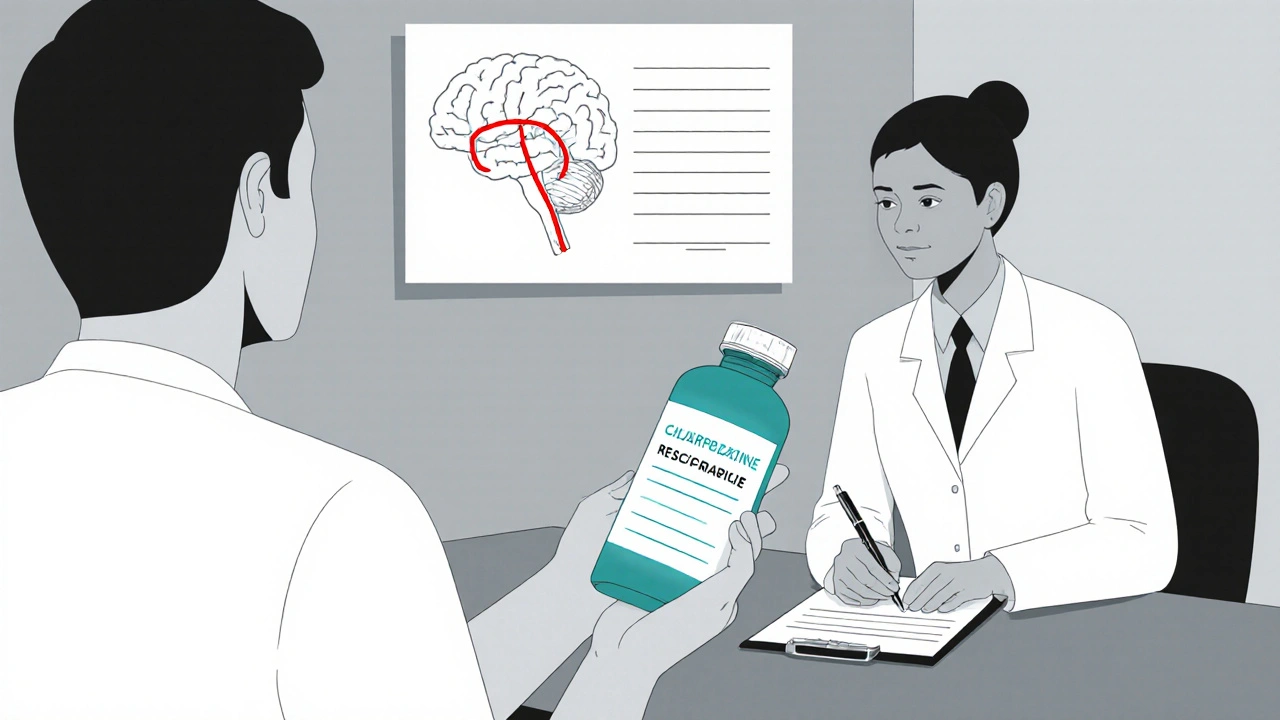Chlorpromazine – Uses, Dosage, Side Effects & Interactions
When working with chlorpromazine, a low‑potency, first‑generation antipsychotic originally marketed as Thorazine. Also known as Thorazine, it belongs to the phenothiazine class and has been used for decades to manage psychiatric and non‑psychiatric conditions.
Antipsychotic, a medication that reduces psychotic symptoms by blocking dopamine D2 receptors drugs like chlorpromazine work by calming excessive dopamine activity in the brain. This mechanism makes the drug useful for treating schizophrenia, acute psychosis, and severe agitation. It’s also prescribed off‑label for nausea, vomiting, and certain behavioral disturbances in autism. Because it targets dopamine, the calming effect can be gentle but may come with sedation, especially at higher doses.
Dosage, the amount of medication taken, varies by condition, age, and response for chlorpromazine ranges widely. For adult schizophrenia, doctors often start with 25‑50 mg daily, gradually increasing to 200‑800 mg split into two or three doses. In treating nausea, a single dose of 10‑25 mg may be enough. Children and elderly patients require lower starting doses and slower titration. Oral tablets, liquid syrup, and intramuscular injections are all available, giving clinicians flexibility to match the route to the patient’s needs.
Side effects, unwanted reactions that can occur with medication use are common with chlorpromazine because it blocks several neurotransmitter systems. The most frequent complaints are drowsiness, dry mouth, blurred vision, and constipation. Orthostatic hypotension—sudden blood‑pressure drops when standing—can cause dizziness or fainting. Weight gain, extrapyramidal symptoms (muscle stiffness, tremor), and photosensitivity also appear in some patients. Most side effects are dose‑related, so careful titration often reduces their impact.
Drug interactions, the ways other medicines can affect or be affected by a drug are a key safety concern. Combining chlorpromazine with other central nervous system depressants—such as benzodiazepines, opioids, or antihistamines—can intensify sedation and respiratory depression. Anticholinergic agents (like diphenhydramine) may worsen dry mouth and constipation. Certain heart medications, especially those that also prolong the QT interval, can increase the risk of arrhythmias when taken together. Always review the full medication list with a healthcare professional before starting or adjusting chlorpromazine.
Special populations need extra attention. During pregnancy, chlorpromazine is classified as a Category C drug, meaning risk cannot be ruled out; doctors weigh maternal benefits against fetal risks. Breastfeeding mothers should discuss potential infant exposure, as the drug does pass into milk. In older adults, reduced kidney and liver function can slow drug clearance, making low starting doses and longer intervals between titrations advisable. Patients with a history of seizures or cardiac disease also require stricter monitoring.
Regular monitoring helps catch problems early. Baseline and periodic blood counts are recommended because chlorpromazine can cause neutropenia in rare cases. Electrocardiograms (ECGs) are useful when patients have cardiac risk factors or are on other QT‑prolonging drugs. Blood pressure should be checked at each visit, especially after dose changes, to catch orthostatic drops. If side effects become troublesome, doctors may switch to a newer antipsychotic with a more favorable side‑effect profile.
What You’ll Find Below
Below you’ll discover a curated set of articles covering a wide range of health topics that often intersect with mental‑health treatment. From alternative therapies for bipolar disorder and menopause‑related fertility options to practical guides on medication tapering, pregnancy diabetes management, and caregiver support for abdominal distress, the collection offers concrete tips you can apply right away. These pieces reflect the same evidence‑based approach we use for chlorpromazine, giving you a broader view of how medicines and lifestyle choices work together. Dive in to see how each article adds a piece to the overall picture of safe, informed healthcare.
Chlorpromazine and Tardive Dyskinesia Risk: What You Need to Know
- Laura Ledas
- Sep, 26 2025
Learn how chlorpromazine can cause tardive dyskinesia, its incidence, risk factors, monitoring tips, and modern management options for patients and clinicians.
Learn More